O Great Pumpkin
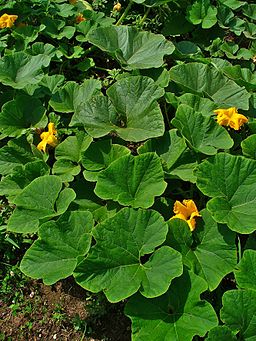
Pumpkin vines in flower.
Photo by H. Zell.
Few fruits or vegetables have as much lore associated with them as the pumpkin. To begin with, is it a fruit or a vegetable? Botanically it is a fruit, because the part we use and eat develops from a flower and contains seeds. Vegetables come from the leaves, stems, buds, and roots of plants. For cooks and the eaters who enjoy the fruits of their labors, however, a pumpkin is to all practical purposes a vegetable.
The nursery rhyme “Peter, Peter, Pumpkin Eater,” like many nursery rhymes seems nonsensical at first, and perhaps to young ears and minds it is best left that way because upon delving into its meaning there is darkness at the core, which may or may not yield life lessons, depending on individual interpretation. Charles Schulz’s It’s the Great Pumpkin, Charlie Brown, is more enjoyable for young and old alike, with more accessible life lessons. The 1966 TV special is, at 50, still a favorite for holiday viewing and is a masterwork of the animator Bill Melendez.
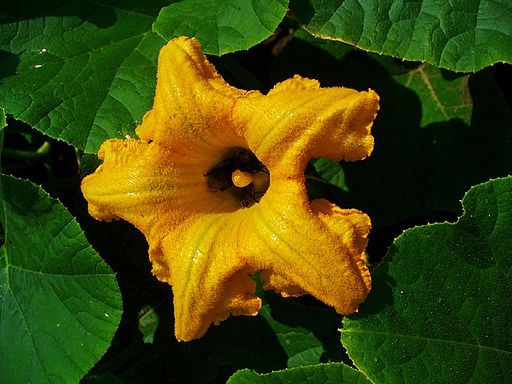
Pumpkin flower with bees. Photo by H. Zell.
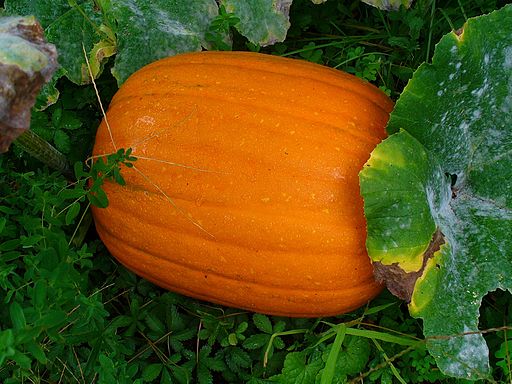
Ripe pumpkin on the vine. Photo by H. Zell.
Jack O’Lanterns started in Ireland with the carving of turnips, potatoes, and beets long before people there were aware of pumpkins. Pumpkins are native to the Western Hemisphere, as are potatoes, but the introduction of potatoes to Ireland made a much bigger impression because of their culinary usefulness and ease of growth and storage. The subsequent ubiquity of the potato in Irish fields would have devastating consequences when a blight affected the crop for several years in the mid-nineteenth century, giving rise to the Potato Famine. Using pumpkins for Jack O’Lanterns did not catch on until the wave of Irish immigrants fleeing the Potato Famine came to the United States and found the pumpkin most suitable to the purpose.
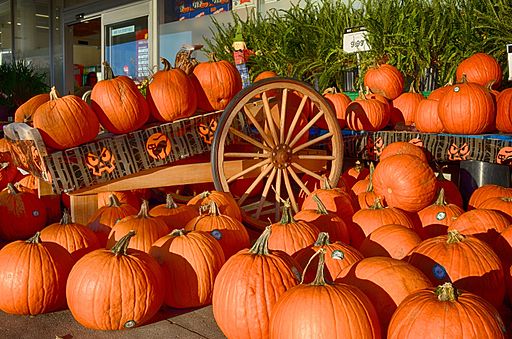
A display of pumpkins for sale at Halloween.
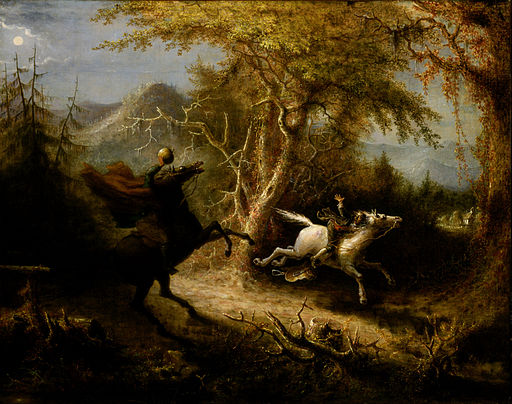
The Headless Horseman Pursuing Ichabod Crane, a painting by John Quidor.
The variety of pumpkin most often grown for decorative carving is the ‘Howden’, developed by Massachusetts farmer John Howden in the 1960s. The pumpkin filling sold in cans for making pumpkin pie is often made from squash varieties which, while belonging to the same genus as pumpkin, Cucurbita, are not from the species we recognize as pumpkin.
One more bit of lore has given us this common image of the pumpkin, and especially its association with spooky autumn nights, and it comes from Washington Irving’s short story “The Legend of Sleepy Hollow.” The original story is a bit unclear on whether the Headless Horseman carries around his own head or a pumpkin as a sort of substitute head, but at any rate the version most people are familiar with today and are probably most comfortable with comes from the 1949 Walt Disney short film. As with the Walt Disney version of Cinderella (where a pumpkin also makes an appearance, as Cinderella’s stagecoach), which was taken from a rather dark fairy tale by The Brothers Grimm, story events become more pleasant and less threatening than in the original. Put another way, the treats are nicer and the tricks less scary, or scarry, if you will.
– Izzy
– Izzy

